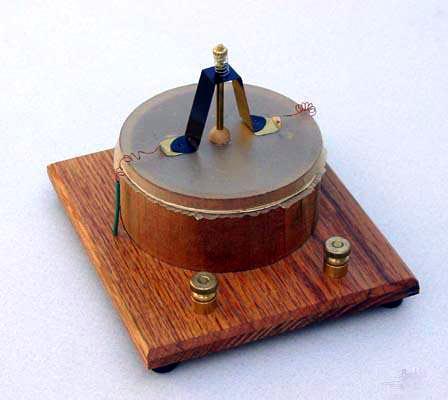
The McDonough Transmitter

James W. McDonough of Chicago, Illinois had the little-known distinction of being the only inventor to de-throne Alexander Bell as the original inventor of the telephone. McDonough was a well-to-do furniture manufacturer of whose hobby, since 1867, had been experimenting with electrically produced sound. His “sound reproducer” was nothing more than an electromagnet positioned close to an iron disc attached to a flexible membrane. It differed little from the electro-magnetic receivers used by many of the early experimenters.
Not content with just producing sound electrically, for years he had pondered the possibility of sending the human voice over a telegraph wire. By 1875 he had created a device that he claimed would do just that. He called it the Teleloge, and on April 10, 1876 applied for a patent. But unlike Alexander Bell, who could get patents issued in just two or three weeks, McDonough’s application would be mired down in Patent Office hearings, interference actions and general red tape for over eight years.
The main problem with McDonough’s application was not the receiver, but his transmitter. Although physically different from Reis’ transmitter, in principle it was virtually identical (see Reis Transmitter). And if that wasn’t enough, McDonough made the same mistake Reis did when he referred to it as a “circuit breaker,” an instrument that would make and break the circuit - or so he thought. Like Reis, McDonough had not yet heard of the microphone mode. And also like Reis, McDonough’s make and break explanation would prove just as fatal.
McDonough’s patent application eventually became embroiled in interference actions with other telephone inventors, including Bell and Elisha Gray. An interference occurs when two or more inventors lay claim to essentially the same invention. When this happened, the matter was turned over to the Examiner of Interferences, whose task it was to determine, with hearings and testimony, who first conceived the invention. In the United States, in interference actions, the patent goes to the inventor who can prove priority of conception, not necessarily to the one who was first to file.
Although McDonough’s transmitter
was deemed non-functional for the same reason as was Reis’,
despite testimony to the contrary, the receiver portion of his
application was declared to have been conceived prior to that
in Bell’s famous patent. In essence, McDonough was now the
original inventor of the telephone. This was not only a blow to
Bell’s ego, but a serious threat to the Bell Telephone Company’s
patent-based monopoly. They immediately appealed this devastating
decision to the examiners in chief, the next highest level of
appeals, who eventually reversed the previous ruling. Retaliating,
McDonough took his case directly to the court of last resort,
Commissioner of Patents Benjamin Butterworth, hoping to have the
previous ruling reinstated. But Butterworth sustained the decision
of the examiners in chief, and the Bell Telephone Company breathed
a sigh of relief.
This page was written by A. Edward Evenson, Author of the book The Telephone Patent Conspiracy of 1876 available at Amazon.com
Return to the homepage
Interested in old telephones? Check out the Antique Telephone Collectors Association